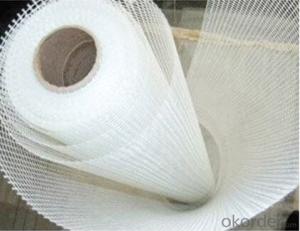Fiberglass cloth, a versatile material with a unique combination of strength and flexibility, has become an essential component in various industries. From construction to aerospace, this lightweight fabric has proven its worth time and again. But what exactly is fiberglass cloth, and how does its weight play a crucial role in balancing these two properties? Let’s dive in and explore the fascinating world of fiberglass cloth and its weights.
The Wonders of Fiberglass Cloth
Fiberglass cloth is made from thin strands of glass that are woven together to create a fabric-like material. It is known for its high tensile strength, which is why it’s often used in applications that require a strong yet lightweight material. The flexibility of the cloth allows it to be easily molded into various shapes, making it perfect for a wide range of uses.
Understanding Fiberglass Cloth Weights
The weight of fiberglass cloth is measured in ounces per square yard (oz/yd²). This weight determines the thickness and the amount of glass fiber present in the cloth. A higher weight means a thicker and stronger cloth, while a lower weight indicates a thinner and more flexible material.
Lightweight Fiberglass Cloth: The Versatile Option
For applications that require a balance of strength and flexibility, lightweight fiberglass cloth is the go-to choice. With weights ranging from 3.5 oz/yd² to 7 oz/yd², these cloths provide a good balance of properties. They are perfect for use in automotive parts, boat hulls, and even in some construction projects.
Medium-Weight Fiberglass Cloth: A Sturdy Choice
When a bit more strength is needed, medium-weight fiberglass cloth comes into play. Weighing between 8 oz/yd² and 12 oz/yd², this type of cloth is ideal for applications that require a bit more durability and resistance to wear and tear. It’s commonly used in the manufacturing of tanks, pipes, and other industrial equipment.
Heavy-Weight Fiberglass Cloth: The Ultimate Strength
For the ultimate in strength and durability, heavy-weight fiberglass cloth is the champion. With weights starting from 13 oz/yd² and going up, this cloth is designed for applications that demand the highest level of strength and resistance. It’s often used in aerospace, defense, and other high-performance industries.
The Role of Resin in Fiberglass Cloth
While the weight of the cloth is important, it’s not the only factor to consider. The resin used with the fiberglass cloth plays a significant role in determining the final properties of the composite material. Different types of resins can enhance the strength, flexibility, and durability of the fiberglass cloth.
Choosing the Right Fiberglass Cloth Weight
Choosing the right weight of fiberglass cloth depends on the specific requirements of your project. Consider the following factors when making your decision:
– Strength Needed: How strong does the final product need to be?
– Flexibility Required: How much bending or shaping will the material undergo?
– Durability: How long should the material last?
– Cost: What is your budget for the project?
The Future of Fiberglass Cloth
As technology advances, so does the development of fiberglass cloth. New manufacturing techniques and materials are being explored to create even stronger and more flexible fiberglass cloths. The future looks bright for this amazing material, with endless possibilities for innovation and application.
In Conclusion
Fiberglass cloth, with its varying weights, offers a wide range of applications in different industries. Balancing strength and flexibility is key to selecting the right weight for your project. Whether you’re working on a small DIY project or a large industrial application, understanding the properties of fiberglass cloth will help you make the best choice for your needs. So, the next time you’re faced with a material selection, remember the wonders of fiberglass cloth and how its weight can make all the difference.

